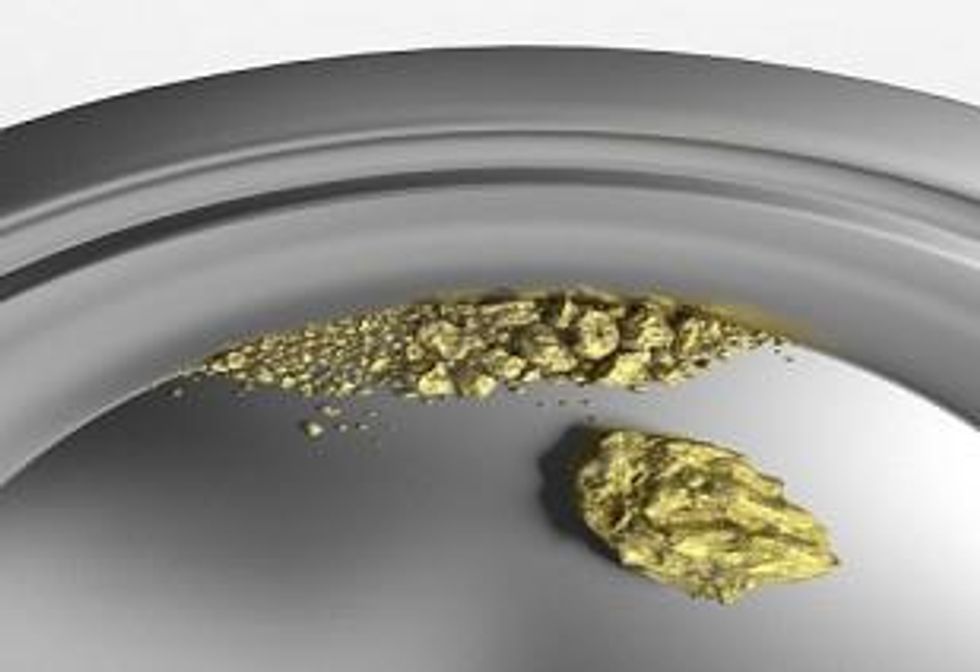The Conversation (0)
Although Chile is known first as a copper producer, a gold mining in Chile dates back to the end of the sixteenth century when a series of rich alluvial deposits produced an estimated 1 metric tonne to 2 metric tonnes of gold annually. The momentum of the present gold rush has been enhanced through the discovery of a series of sub-volcanic, mainly epithermal, gold deposits mostly located at elevations of more than 4,000 m in the Andean Cordillera.
This article was first published on Gold Investing News on September 13, 2010
By Leia Michele Toovey- Exclusive to Gold Investing News
When the second period of gold mining activity began in 1740, gold was extracted from veins. Gold mining was encouraged by the establishment of a royal mint at Santiago in 1749, and it peaked at more than 3 metric tonnes around 1810. A decline in mining came as a result of the war for independence from Spain that occurred from 1819-1823. The nineteenth century was a time of political turmoil, and as a result miners left Chile to explore in more politically stable countries.
In the 1930’s, when the political climate stabilized, considerable gold was once again being mined as a by-product of copper and silver. This third cycle of production was accelerated with the rise in gold prices. This period, however, was not a time of new discoveries. In fact, hardly any new deposits were explored; instead many of the old hard-rock mines were reactivated using modern technology. Production peaked at 11.5 metric tonnes in 1939 before declining to 2 metric tonnes in 1960. This level was maintained until the liberation of the gold price in 1971 ushered in the fourth, most spectacular and ongoing surge in production.
The momentum of the present gold rush has been enhanced through the discovery of a series of sub-volcanic, mainly epithermal, gold deposits mostly located at elevations of more than 4,000 m in the Andean Cordillera. In addition to these epithermal deposits, Chile also holds significant gold reserves in porphyry deposits. The epithermal gold deposits in Chile were formed during the Cretaceous through the Cenozoic, as a result of a non-collisional ocean-continent convergent plate margin. The crustal stresses resulting from the plate margin created long, sinuous north-northeast trending magmatic belts that roughly parallel the Pacific coast. These belts’ mineralization varies in a north-south direction, as a result of the timing of magmatism along the plate margin.
Although porphyry type deposits are as common as epithermal type deposits, the quality of mineralization in these deposits are sporadic. That is why it is common that gold mined from porphyry deposits is as a byproduct of copper and molybdenum.
Valuable gold vein deposits have been discovered in the coastal zone of northern Chile. These veins are a result of a relatively recent (during the last 15 million years) enrichment event, which involved the movement of chlorine brine near the earth’s surface. This brine added additional surficial gold enrichment.
Local mines
The most prominent of Chile’s gold projects is Barrick Gold Corp.’s (TSX: ABX) Pascua-Lama project. Pascua-Lama is currently the largest of Chilean gold projects with proven and probable reserves of 17.8 million ounces of gold and 671 million ounces of silver. The project is under development, and according to Barrick’s website, should be in operation by 2013. The mine has an estimated life of more than 25 years, and approximate operating cash costs of $20 to $50 per ounce, which if realized would make Pascua-Lama one of the lowest cost gold mines in the world.
Exeter Resource Corp. (TSX: XRC) is an exploration stage company working in Chile on the Caspiche Project, located in the Maricunga Belt between Barrick and Kinross Gold’s Cerro Casale gold-copper deposit. The estimated size of the Caspiche resource ranks it as one of the gold industry’s largest discoveries in recent years.
State-owned Codelco, the world’s largest producer of copper, also produces gold from its operations in Chile. Codelco has an exploration agreement with Barrick to search for new gold and copper deposits.





